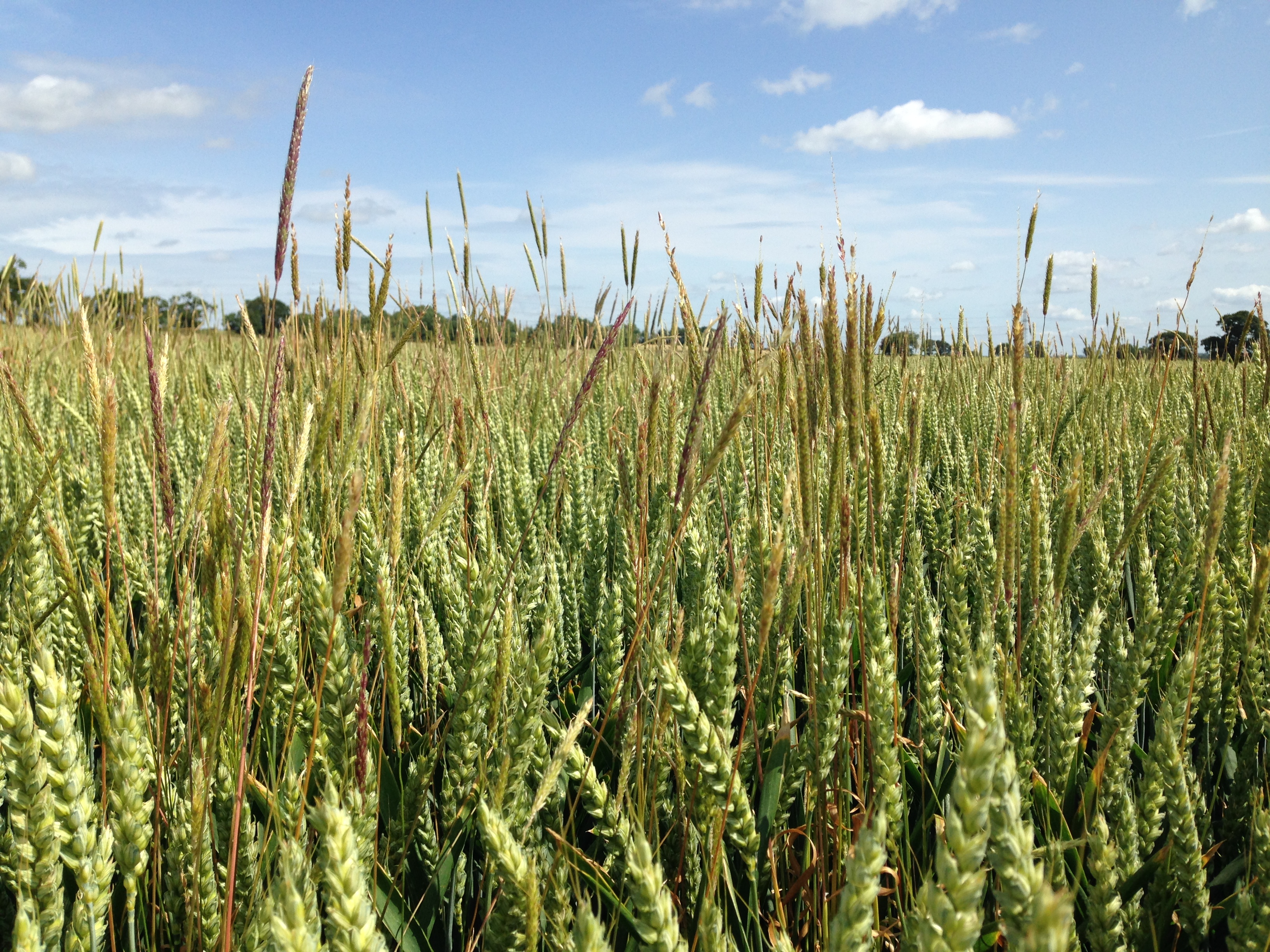Herbicide resistance is genetic within the plant and should not be confused with poor herbicide efficacy (e.g. poor weather, timing of application, spray quality, spray conditions etc.)
Symptoms of herbicide resistance to look out for include: healthy plants beside dead plants of the same species, a susceptible species having poor control when other susceptible species are well controlled, discrete weed patches and a general decline over a number of years.
The two main types of resistance mechanisms are:
Target site resistance : occurs due to a mutation in a specific gene which changes the structure of the encoding protein that the herbicide mode of action specifically targets. This means the herbicide can no longer bind the protein and exert its phytotoxic effect.
Enhanced metabolism : ability of the weed to detoxify (metabolise) the herbicide in question. Often involves multiple genes and mechanisms and can include things such as reduce uptake, reduced translocation or comparmentalisation of the herbicide.
Some other key terms used in herbicide resistance
MOA : mode of action. Refers to the specific cellular process targeted by the herbicide (e.g inhibition of microtubule assembly, aceto-lactate synthase (ALS) inhibition)
Cross-resistance: a single mechanism in the weed that confers resistance to more than one herbicide active ingredient. For example plants with an enhanced metabolism resistance mechanism may detoxify both Group 1 (ACCase inhibitors) and Group 2 (ALS inhibitors) herbicides, or a weed with a target site resistance mechanism may cause resistance to other herbicides that have the same MOA, even if that herbicide has not been used on the weed.
Multiple resistance : when plants exhibit 2 or more resistance mechanisms to different herbicide active ingredients. For example the weed may display both target site and enhanced metabolism mechanisms conferring resistance to more than one herbicide MOA.
Partial resistance : only a small proportion of the weed population (typically less than 20%) survive the specific herbicide treatment at the standard application rate
Herbicide resistance in the UK
So far in the UK resistant populations of weeds have been found in:
Grasses
- Black-grass
- Italian-rye grass
- Wild oats
- Bromes
Broad leaved weeds
- Poppy
- Chickweed
- Mayweed
Resistance has also been found by ADAS in an ALS resistant prickly sow thistle
The majority of herbicide resistance cases are to ALS and ACCase inhibitors. Rotating herbicide modes of action can reduce risk of resistance developing to these widely used herbicide groups.
Testing for herbicide resistance
Herbicide resistance tests are key to confirm resistance and help future management of resistant weeds by choosing the correct chemistry. These can be done by collecting seed from suspected resistant weeds and sending to ADAS who will test the seed for its resistance status. Either pot tests or petri dish tests can be done depending on the weed species and types of herbicide to be tested.
Genetic testing (detecting mutations at the molecular level) has also been widely developed over the last few years and this is something ADAS may look to expand its services to.
Reporting herbicide resistance
Herbicide resistant weeds can be reported to the International Herbicide-Resistant Weed Database. This resource provides details of all reported cases, the weed species, in which crops and to which herbicide group.
Other useful sites
The Herbicide Resistance Action Committee (HRAC) provides comprehensive information on herbicide resistance and weed management and has useful tools such as the herbicide classification look up
The Weed Resistance Action Group (WRAG) consists of experts working to produce guidance on weed resistance issues.





